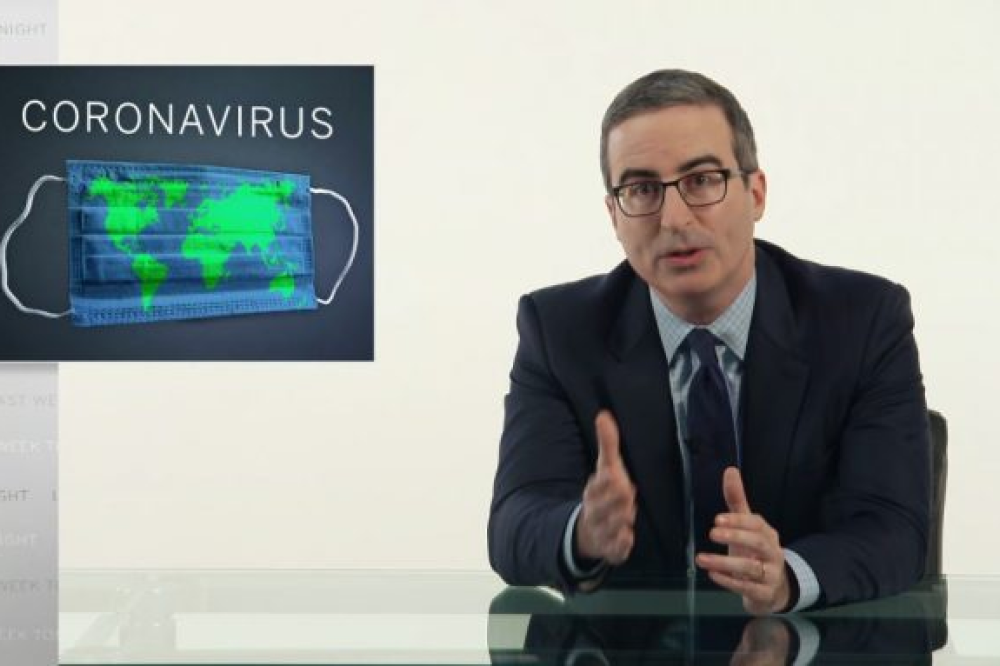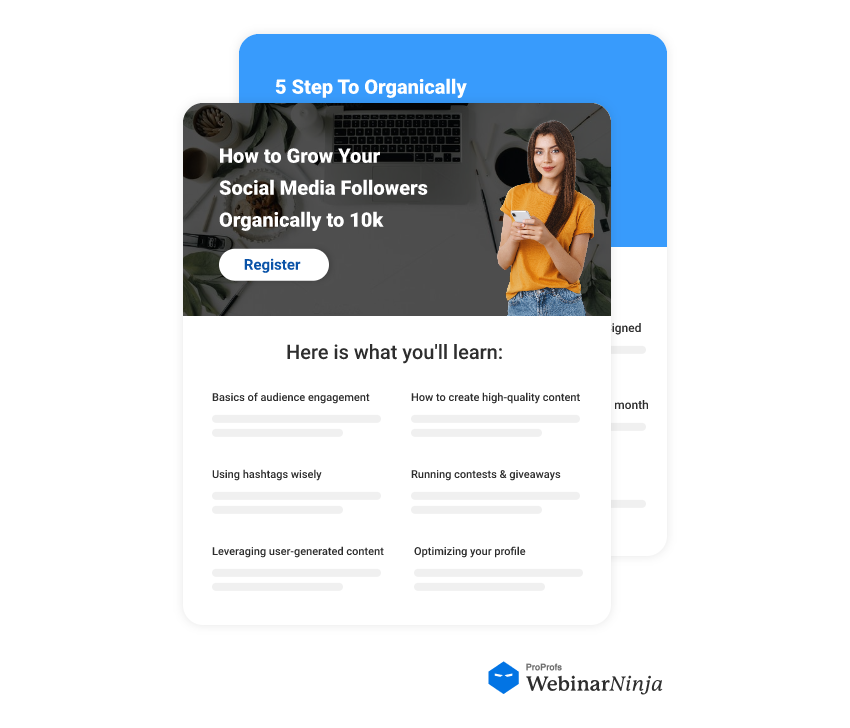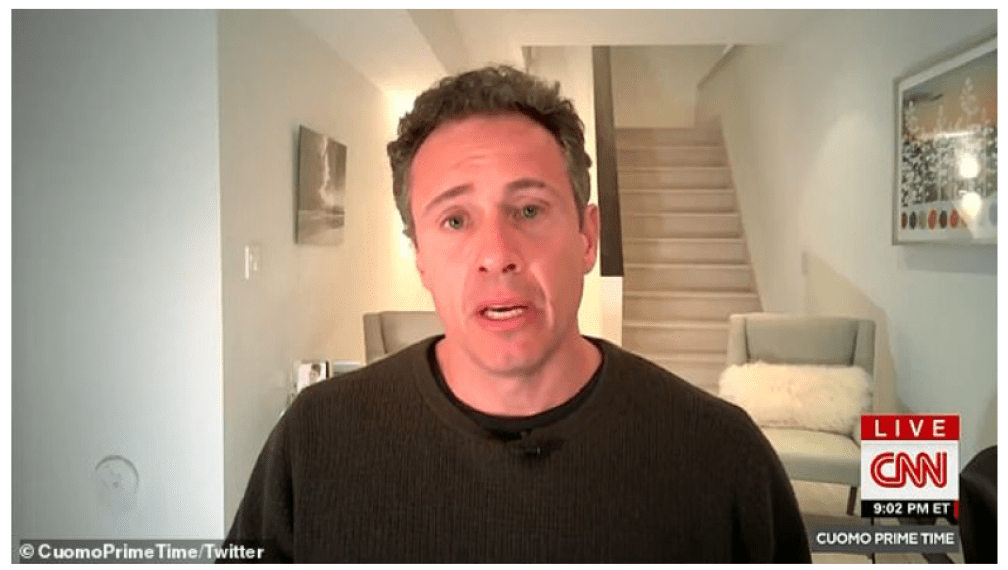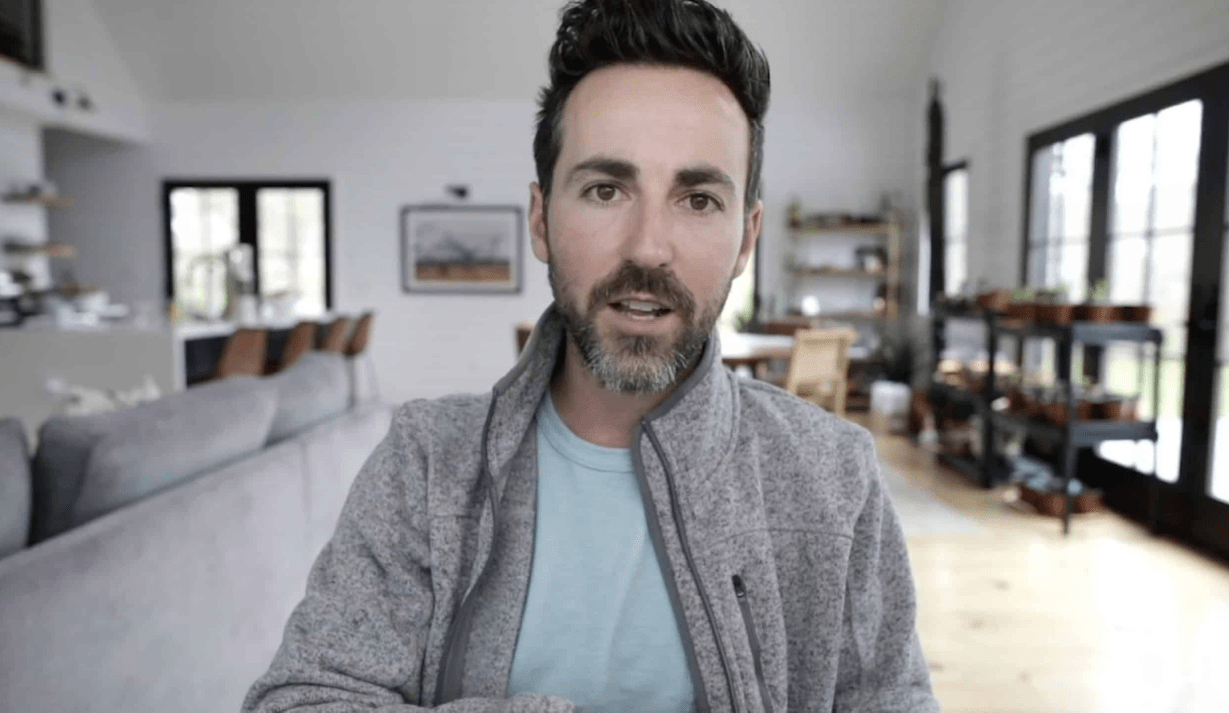Let’s talk about something that makes a huge difference in how people see you online—your on-camera presence. Whether you’re hosting a webinar, running a live stream, or making videos for your audience, the way you present yourself matters.
And guess what? You don’t need to be an entertainer to be a performer.
If you have ever wondered how to improve on-camera presence, the answer lies in small but powerful adjustments. Simple techniques can make you more engaging and confident, from voice modulation to body language.
Here are some practical tips to help you connect, captivate, and leave a lasting impression.
Tips & Tricks to Improve Your On-Camera Presence
A strong on-camera presence is not about perfection but confidence, authenticity, and connection. Here are some practical tips in different areas that will help you engage your webinar audience and deliver your message with impact.
Performance: Bringing Energy & Authenticity to the Camera
Performance isn’t about putting on an act. It’s about being real and present. Here’s what makes a strong on-camera presence:
1. Talk to One Person, Not a Crowd
When you’re live streaming, it’s usually an individual sitting at their computer watching you. So talk to them like a person. If you make it feel like a one-on-one conversation, your audience will feel more connected. That means no “Hey, everyone!” unless you’re speaking to a live audience in a theater or group setting. Keep it personal.
2. Eye Contact Matters
The camera is your audience’s eyes. If you’re looking at your screen or yourself on the monitor instead of the camera lens, people will feel like you’re not actually talking to them.
Look into the lens. If it helps, think of it as a person you’re having a conversation with—not something intimidating.

3. Be Natural—Not a Robot
Trying to sound “professional” can actually make you stiff and awkward. If you came in saying, “Today, we will discuss Module One: Performance,” it would feel staged. Instead, bring the same energy and rhythm you would use in a conversation.
4. Embrace Distractions, Don’t Fight Them
Live streaming means life happens. Maybe there’s a buzzing sound outside. Maybe the doorbell rings. If you ignore it, your audience will feel uncomfortable because they can hear it, too. Instead, acknowledge it and move on. It makes you more human and relatable.
5. Find Your Style
Everyone has their own way of presenting. Some people lean in close and whisper into the mic. Some sit back and chat casually. Maybe you gesture a lot, maybe you don’t.
Maybe you’re the type to have a Scotch in hand while you talk (not saying you should, but hey, to each their own). The point is to find what feels authentic to you. Don’t try to mimic someone else.
6. Forget Body Language Tricks
There’s a lot of talk about “power poses” and “how to use your hands” in public speaking, but honestly, if you’re connected to your message and audience, your body language will care for itself.

Instead of focusing on what to do with your hands, focus on your content and connection with your audience. Your gestures will follow naturally.
7. Work on Your Voice
Your voice is a powerful tool, and how you use it affects how people perceive you. If you’re soft-spoken and breathy, you might come across as unsure. If you’re shouting into the mic, you’ll overwhelm people.
The key is balance—having enough vocal variety so you don’t sound monotone but keeping it natural. If you struggle with breath control or projection, working with a voice coach can make a huge difference.
8. Play with Pacing
Speaking too fast makes you seem nervous. Speaking too slowly puts people to sleep. The trick is to keep things moving at a good pace—fast enough to keep attention but slow enough that people can absorb what you’re saying. Also, contrast is key. If you keep the same tone and speed the whole time, people will tune out.
9. Dress for Your Brand
Your clothing says something about you. If you’re shooting from home, that doesn’t mean you should look like you just rolled out of bed. Choose outfits that align with your personal brand and make you feel confident.

Also, avoid wearing stripes or overly busy patterns—they don’t play well with cameras.
Content: Structuring Your Message for Impact
Content isn’t just about what you say—it’s about how you say it. People need structure to stay engaged. Here’s how to make your message stick:
1. The Big Idea
Every great presentation has a core idea. What’s the ONE main thing you want people to walk away with? Make that clear right from the start.
2. Make a Clear Promise
Tell people exactly what they’ll gain from listening to you. What’s in it for them? If they know what they’ll get, they’ll stick around.
3. Show You Understand Their World
People will only listen to you if they feel like you “get” them. Acknowledge their struggles, their fears, and their questions. When they feel understood, they’re more open to what you have to say.
4. Highlight the Consequences
What happens if they DON’T take action? If they ignore what you’re teaching, what will they lose? Sometimes, fear of loss is a bigger motivator than the promise of gain.
5. Share the Benefits
Once they understand the risks of inaction, paint a picture of what’s possible. Show them what they’ll gain if they follow through with your advice.

6. Use Contrast
Contrast keeps people engaged. Vary your tone. Shift between serious and lighthearted moments. Change up how you deliver information—use examples, stories, questions, and humor to keep things interesting.
7. Choose a Content Framework
Organizing your information well makes all the difference. Here are five great ways to structure your content:
- Numerical: “7 Tips for Better Webinars.”
- Chronological: “Step-by-Step Guide to Better Presentations.”
- Modular: Breaking content into different sections, like “Mindset, Techniques, and Tools.”
- Problem-Solution: State a problem, then offer solutions.
- Compare & Contrast: “The Difference Between Good and Great Presenters.”
Technical Aspects: Setting Up for Success
Your content and delivery mean nothing if your audience can’t see or hear you clearly. Here’s what you need:
1. Use an External Camera
Laptop cameras are not great. A Logitech C920 or similar external camera will make a huge difference in video quality.
2. Get the Right Lighting
Good lighting makes you look professional. If you’re on a budget, even a basic ring light can work. If you want something higher-end, softbox lighting or ice lights are fantastic.
3. Frame Yourself Well
Make sure your camera is at eye level. If it’s too low, you’ll look like you’re looming over people. If it’s too high, you’ll look small and distant. Aim for a comfortable, natural frame.
4. Use a Good Microphone
Bad audio is worse than bad video. If your audience can’t hear you clearly, they’ll leave. A good USB mic like the Audio-Technica AT2020 or a wireless lapel mic can help a lot.
5. Keep It Professional
Even if you’re shooting from home, make your background clean and uncluttered. People will get distracted if there’s too much going on behind you.

Confidence & Preparation: Overcoming Nerves & Presenting with Ease
Feeling nervous on camera is completely normal, but there are ways to manage it. Here are some strategies to build confidence and reduce anxiety:
1. Rehearse, but Don’t Over-Rehearse
Practicing what you want to say helps, but avoid memorizing every word. You want to sound natural, not scripted. Outline key points and practice delivering them in a conversational way.
2. Do a Warm-Up Routine
Loosen up before going live. Do vocal warm-ups, shake out any tension, and take a few deep breaths. This will help reduce stiffness and make you feel more relaxed.
3. Start with a Smile
A smile sets the tone. It helps you feel at ease and makes you appear more approachable to your audience.
4. Get Comfortable with the Camera
If being on camera makes you nervous, spend time getting used to it. Record short practice videos, watch yourself, and make adjustments. The more you do it, the easier it gets. You can watch this video to understand how to conduct a webinar dry run before you actually deliver.
5. Focus on the Message, Not Yourself
Worried about how you look or sound? Shift your focus to the value you’re providing. Think about how your content helps your audience instead of fixating on personal insecurities.
6. Keep Hydrated and Take Care of Your Voice
Drink water before speaking to avoid dry mouth. Avoid caffeine if it makes you jittery, and consider using a humidifier if you’re in a dry environment.
7. Use a Cue Card if Necessary
If you’re worried about forgetting what to say, keep a small cue card with key points near the camera. This can serve as a quick reference without being distracting.
8. Manage Anxiety with Breathing Techniques
Deep, slow breaths help calm your nerves. Try inhaling for four counts, holding for four counts, and exhaling for four counts before you go live.
9. Expect Mistakes and Move On
Nobody is perfect on camera. If you stumble over a word or forget a point, just keep going. Your audience is more interested in what you have to say than in small slip-ups.
10. Keep Going Even When It Feels Awkward
It may feel weird talking to a camera, but with time, it will become second nature. Keep practicing, keep showing up, and you’ll improve.
Engagement & Storytelling: Keeping People Watching and Making Your Message Unforgettable
Your audience won’t stick around unless they feel engaged. Whether you’re hosting a webinar, recording a video, or going live, these techniques will help you hold attention and leave a lasting impression.
1. Start with a Hook
The first few seconds of your video matter the most—this is where you win or lose your audience. Open with a compelling question, a surprising fact, or a relatable story that makes them curious. A strong hook makes people want to stay and hear what comes next.
2. Make it Interactive
People don’t just want to watch; they want to be part of the experience. Ask direct questions, invite responses in the chat, run live polls, or acknowledge viewer comments. The more interactive your session, the more invested your audience becomes.
3. Use Storytelling
Facts inform, but stories connect. People remember narratives far more than bullet points. Share personal experiences, case studies, or even hypothetical scenarios to bring your message to life. A well-told story taps into emotions, making your content more memorable.
4. Change Up Your Delivery
A monotone voice puts people to sleep. Keep your energy dynamic by varying your speed, tone, and volume. Use intentional pauses to emphasize key points, and don’t be afraid to get animated when it fits the moment.
5. Make Your Content Visually Engaging
A talking head can only hold attention for so long. Keep things interesting by incorporating slides, props, screen shares, or even a simple change in the webinar background. Visual variety helps prevent viewer fatigue.
6. Keep it Conversational
Even if you’re presenting to a large group, speak as if you’re talking to one person. Drop the overly formal tone and use natural, everyday language. This makes your delivery more relatable and engaging.
7. End with a Strong Call to Action
Your audience needs to know what to do next. Whether it’s subscribing, signing up, visiting a website, or completing an action, they should be direct and clear about their next step. A strong webinar CTA keeps the momentum going beyond the video.
Advanced Techniques: Leveling Up Your On-Camera Presence
If you want to take your on-camera delivery to the next level, these advanced techniques can help you look more polished, confident, and professional.
1. Use Movement to Add Energy
A little movement goes a long way. If you’re standing, shift your position slightly to emphasize points or walk naturally within your frame. If sitting, use intentional hand gestures to add energy without being distracting.
2. Leverage Microexpressions
Small facial expressions—like a slight smile, raised eyebrows, or a nod—can add warmth and make you more engaging. These subtle cues signal confidence and help your audience feel connected to you.
3. Experiment with Different Camera Angles
A straight-on shot is a classic, but slight variations can create more visual interest. Try shifting the camera slightly above eye level for a more flattering look, or experiment with side angles for a cinematic feel.
4. Master the Art of Pauses
Pauses aren’t awkward—they’re powerful. A well-timed pause builds anticipation, allows key points to sink in, and keeps your audience engaged. Use silence strategically to make your words more impactful.
5. Use Multi-Camera Setups for Dynamic Videos
For a more professional feel, switch between different camera angles. A close-up for emphasis, a wide shot for context—these small variations can make a big difference in production quality.
6. Adapt Your Energy to the Medium
Not every video format requires the same energy level. A webinar might demand a more expressive, engaging tone, while a pre-recorded video allows for a more relaxed delivery. Match your energy to the platform and audience expectations.
7. Control Your Background for a Professional Look
A cluttered background can be distracting. Make sure your setting is clean and visually appealing. Consider using a neutral backdrop or a well-lit, organized space that keeps the focus on you.

8. Experiment with Lighting Styles
Lighting can dramatically change how you appear on camera. Soft, even lighting is flattering, but playing with side or backlighting can add depth and mood. Find what works best for your setup.
9. Develop a Signature Style
What makes your presence unique?
Maybe it’s a catchphrase, a signature way of signing off, or a distinct visual style. Developing a consistent personal brand makes you more recognizable and memorable.
10. Practice on Different Platforms
Being on camera for a webinar is different from recording for TikTok or YouTube. Try various formats to refine your skills and learn what works best for each medium.
The more you experiment, the more confident and versatile you’ll become.
Master Your On-Camera Presence to Host Better Webinars
On-camera presence is not about being perfect. It is about being present, engaged, and authentic. You do not need a flawless delivery or a professional setup to create impactful videos. What truly matters is how well you connect with your audience. With practice, you will refine your style and make your delivery feel natural.
A great presence keeps viewers engaged, but the right tools make hosting easier. You can use good software like WebinarNinja offers built-in email automation, live polls, Q&A, and hybrid webinar options to simplify hosting and maximize engagement, helping you create professional, high-impact webinars without the technical hassle.
Want to host a webinar for free?
Use WebinarNinja to teach, improve marketing, and grow your sales.








